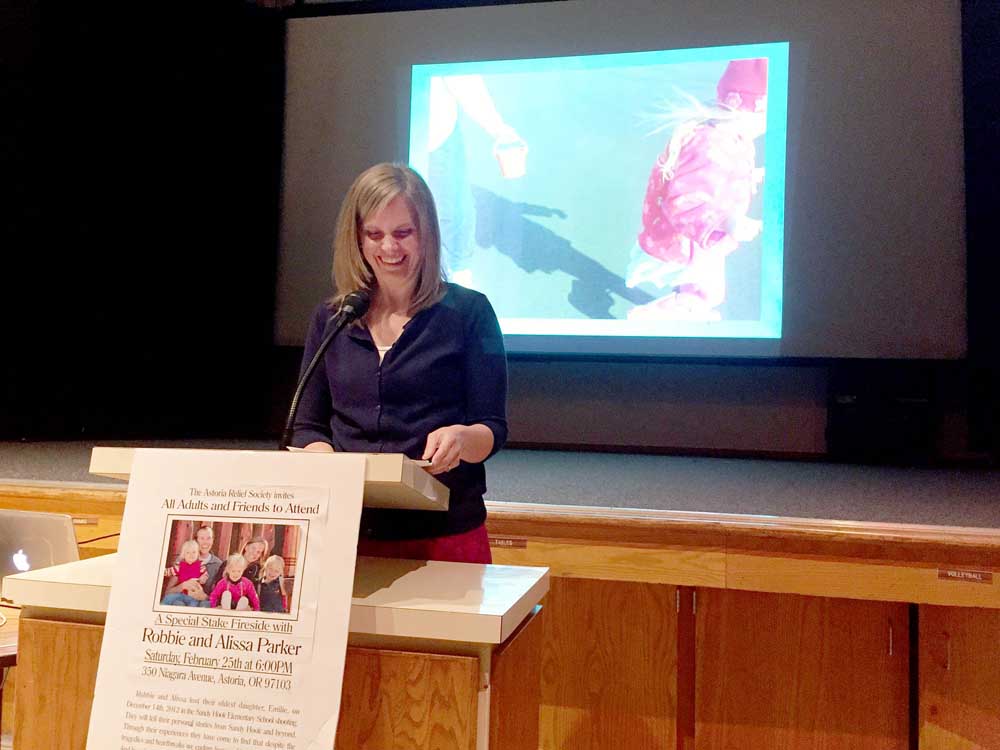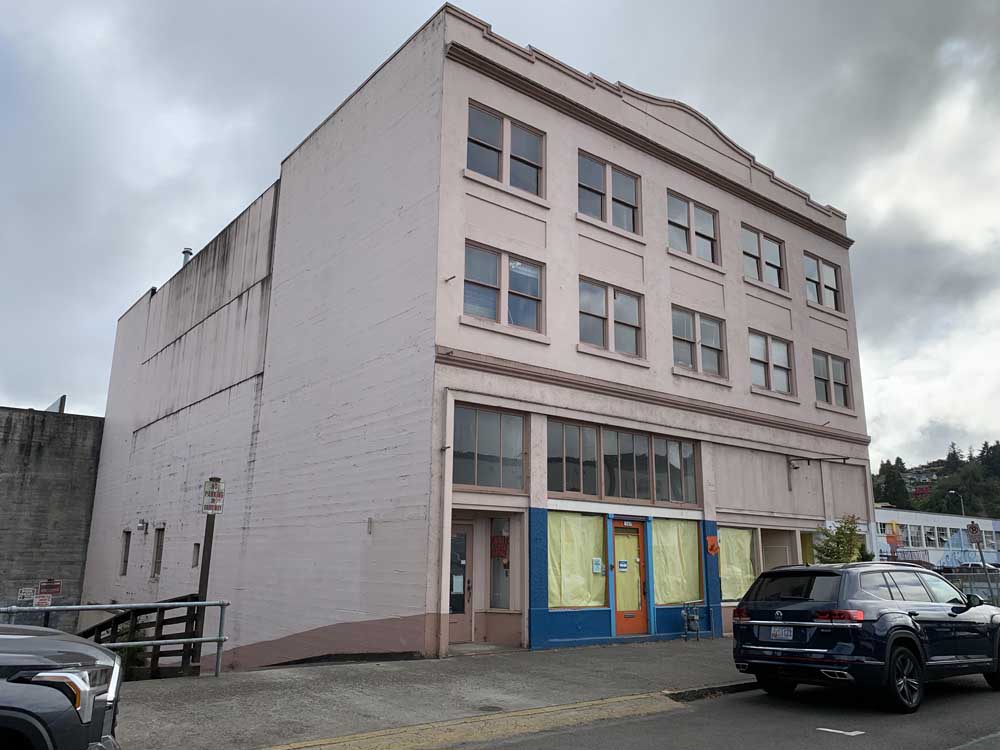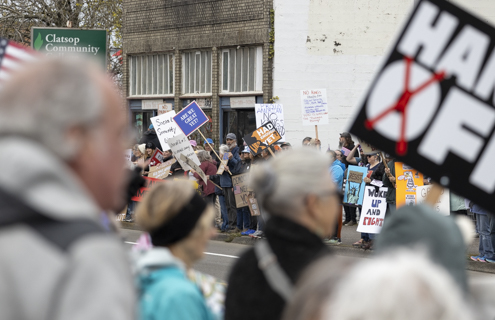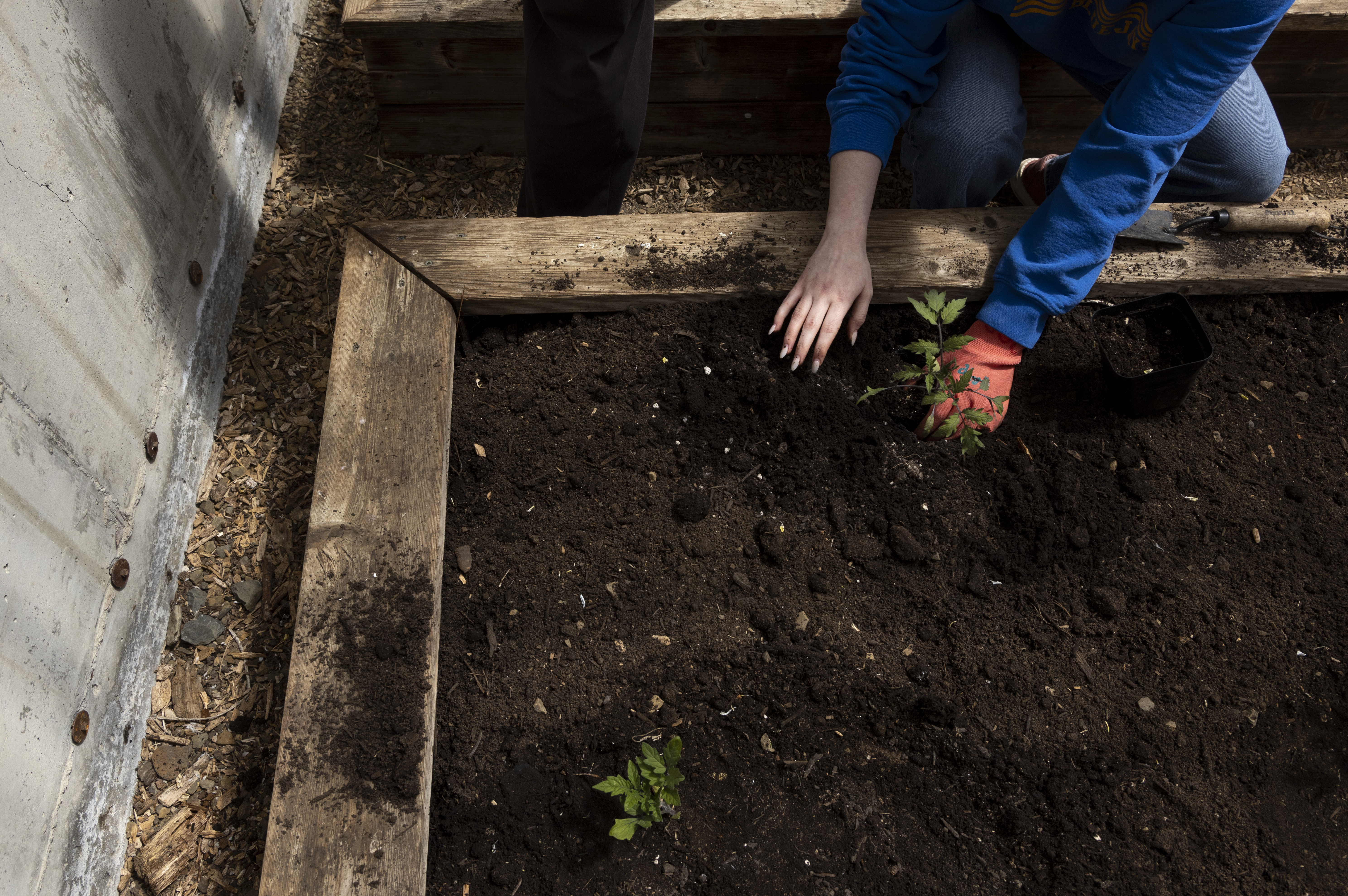Finding faith and forgiveness after tragedy
Published 4:34 am Monday, February 27, 2017

- Alissa Parker, whose oldest daughter, Emilie Parker, was murdered at Sandy Hook Elementary School, tells a fond story of Emilie at Astoria's Church of Jesus Christ of Latter-day Saints.
Parents of a 6-year-old girl murdered at Sandy Hook Elementary School relived their story of grief and forgiveness at Astoria’s Mormon Church on Saturday, offering a personal example of striving to make sense of tragedy through the teachings of their faith.
Robbie and Alissa Parker lost their oldest daughter, Emilie, when 20-year-old Adam Lanza shot and killed 26 people — 20 of them children — at the school in Newtown, Connecticut, on Dec. 14, 2012.
More than four years later, the trauma remains raw. And, for the Parkers, healing has meant confronting what forgiveness means, particularly in the context of the Church of Jesus Christ of Latter-day Saints.
The Parkers, who now live outside Vancouver, Washington, remember Emilie as a girl who loved to draw and color, and would not give up on a picture until she got it right.
At Emilie’s funeral, Robbie said he wanted to apply her “never-give-up” spirit to how he handles grief, because “I knew it was going to be really hard, and I knew I wasn’t going to be really good at it.”
Thousands of letters had poured in offering support, condolences, prayers and well-wishes — an overwhelming response to overwhelming evil.
But the Parkers were not ready to forgive; Robbie even resented that he kept encountering messages of forgiveness in scripture, such as: “If ye do not forgive, neither will your Father which is in heaven forgive your trespasses,” from the Gospel According to St. Mark.
“I have to tell you, it felt awful — I mean, awful,” Robbie said, casting his struggle in a self-deprecating light. “I was like, ‘Are you kidding me? … I am so angry right now.’”
Though the couple redevoted themselves to their beliefs, the peace that came with it did not last.
“It did not take long for a lot of feelings of anger and depression and anxiety to just completely overwhelm me,” Robbie Parker said. “My heart was broken. It was just shattered.”
Soon they became acquainted with an insidious internet subculture: the Sandy Hook “truthers,” who spread the lie that the shooting was a hoax perpetrated by the U.S. government as a pretext to enact strict gun control measures. The Parkers were accused of being paid “crisis actors.”
“We would get emails, we would get letters to our house, phone calls to friends of ours, death threats — I mean, you name it,” Robbie Parker said, adding: “There’s things about grief and there’s things about pain that I knew would probably happen. But not that.”
Alissa said the “truthers” haven’t been as much of a nuisance since the couple relocated to the Pacific Northwest in 2014 with their two younger daughters, Madeline and Samantha, now 9 and 7.
Robbie works as a physician in the newborn intensive care unit at Oregon Health & Science University. Alissa, a stay-at-home mom, co-founded Safe and Sound Schools, a nonprofit working to improve school-site safety. Her book about Emilie is scheduled to be published this year.
Together, they run The Emilie Parker Art Connection, a nonprofit that promotes art therapy for children who have suffered trauma and abuse.
While he tucked their middle daughter, Madeline, into bed one night, Robbie told her they could one day be with Emilie in heaven if they made “the right choices” in this life.
Then Madeline wondered aloud about Emilie’s killer. Robbie, not wanting to betray that he didn’t know how to respond, asked Madeline what she thought of the boy.
“And she said, ‘You know, he was probably a good boy. I just think he made some bad choices,’” Robbie recalled.
He asked her what she thought God felt about the boy.
“And she goes, ‘Heavenly Father loves him, but he’s probably not very happy with the choices that he made.’
“Here I was, trying to work so hard about being a good example, about how I was supposed to feel about that boy,” he said. “And here was my … 5-year-old daughter being an example for me.”
He said the conversation with Madeline taught him that, “if I was going to develop any type of forgiveness in my heart, then I needed to start to see him how Heavenly Father sees him, as a child of God.”
Alissa Parker said that, for her, seeing the shooter a different way was “eye-opening.”
“It wasn’t just softening my heart, and telling myself to soften my heart, it was changing my viewpoint. It was putting on the glasses of our savior, and seeing (Lanza) through his eyes, that changed the way I saw him,” she said.
The empathy she began to feel toward Lanza scared her, she said, “because I wanted to be mad at him. I wanted to be angry.”
But she came to consider her compassion as a sign of help from God — a step in the healing process.
Another step came when they arranged a face-to-face conversation with Lanza’s father. Not only had Adam Lanza committed suicide after the massacre, he is believed to have murdered his mother beforehand.
Through that exchange, the Parkers learned that Lanza was not a monster, or at least that he hadn’t always been one.
It is tempting, Robbie Parker said, to write off someone who commits an atrocity as a “monster”; it distances the object of hatred from the rest of humanity, seeming to isolate the problem.
“That feels good, and it’s very easy to do, just throw that label out there, and then just kind of wipe ourselves clean of it,” he said.
But it provides “a very false sense of security,” he said, “because if that person is over there, and they are a monster, then I don’t have to worry about monsters over here.”





